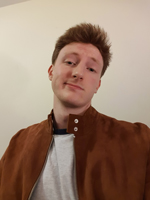Introduction to centronuclear myopathy (CNM)
Just by clicking on this article you have used a group of muscles called skeletal muscles. These are muscles attached to your bones, which gives them their name, and are the muscles that facilitate all voluntary movement.1 However, conditions such as Centronuclear Myopathy (CNM) lead to these skeletal muscles developing weaknesses and wasting, causing muscle pain and soreness to those that have these conditions.2
CNM belongs to a group of muscle disorders called congenital myopathy disorders inherited genetically and present at birth that affect skeletal muscles.3
The prevalence of congenital myopathy is estimated to be around 1.5 per 100,000 people, though the prevalence of CNM is less fully understood. Studies currently predict the prevalence of CNM to be in the ranges of 0.02-0.28 per 100,000 in adults and 0.25-0.66 per 100,00 in children.4
By reading this article, you will gain a foundational knowledge of what causes CNM, how it is identified and diagnosed, and the differences between each of the CNM conditions. Additionally, this article will cover how the different conditions are treated, how to live with CNM, as well as briefly touching upon the research into future treatments.
Causes and genetics of CNM
In your body, you have 2 copies of every gene in your DNA one inherited from your mother, and the other from your father. Each of the two different versions of the same gene are called alleles. These alleles can be dominant or recessive, with only one dominant allele needed to be expressed. On the other hand, recessive alleles can only be expressed if the same version of the gene has been inherited by both mother’s and the father.
Our genes provide the blueprints for every cell in our body, including the blueprints required to produce every protein needed for their function. These genes can undergo mutation, changing the blueprints in major, minor or no effect at all. Changes to the blueprints can cause changes to how the protein is produced, either producing more, less, none, or producing faulty proteins instead. These mutations can also be passed down to children and if expressed, result in changes to gene function.5 Such mutations are the cause of CNM which we will go into further detail later in this article.
Role of centronuclear proteins in muscle function
Skeletal muscle cells require a host of proteins, all with different functions to grow, develop and maintain themselves. The following proteins are affected in people with CNM:
- Myotubularin: An enzyme required for skeletal cell development and their maintenance6
- Dynamin 2 (DNM2): A protein involved in controlling the shape and integrity of the cell skeleton as well as its ability to take things in and out of the cell7
- Amphiphysin 2: A protein involved in coordinating other proteins so that they can complete their function6
- Ryanodine receptors: Receptors that are important in allowing skeletal muscle cell contraction and movement
Classification of CNM
CNM conditions can be broken down into three subtypes:
- X-linked myotubular myopathy (XLMTM)
- Autosomal Dominant Centronuclear myopathy (AD-CNM)
- Autosomal Recessive Centronuclear myopathy (AR-CNM)
The subtype and severity of the condition depend on which genes have mutations.
Below is a table of each of the genes with mutations associated with causing each of the three subtypes of CNM.
| XLMTM | AD-CNM | AR-CNM | |
| Gene mutations | MTM1 | DNM2 | BIN1 |
| RYR1 | RYR1 |
- Myotubularin 1 (MTM1): codes for the production of myotubularin.6 The MTM1 gene is located on the X chromosome which is why the condition is called X-linked. Because males have only one X chromosome they are much more likely to have XLMTM compared to females
- DNM2: The gene responsible for the production of Dynamin-2 proteins7
- RYR1: The gene responsible for the production of ryanodine receptors
- BIN1: Box-dependent Interacting Protein-1 (BIN1) gene codes for Amphiphysin-2 production
Mutations of these genes are associated with less or non-functioning versions of their corresponding proteins being produced, leading to the issues seen in those with CNM.
Clinical presentation
Of the three subtypes, XLMTM is the most severe, the majority of children with XLMTM have the following issues within the first year of life:
- Decreased muscle tone and muscle weakness (hypotonia)
- Muscle wastage (atrophy)
- Inability to breathe on their own (respiratory failure)
Often children with XLMTM require breathing support and feeding tubes due to their inability to breathe or swallow on their own.6 Due to their weaker muscles, people with XLMTM may never walk.
Autosomal-dominant and autosomal CNM are less severe than XLMTM but have the following symptoms:
- Drooping eyelids (ptosis)
- Weakness of facial muscles
- Weakness of eye muscles resulting in less control over eye movement (ophthalmoplegia)
- Irregular curving of the spine (scoliosis)
AD-CNM is less severe compared to AR-CNM with people having milder symptoms compared to those with AD-CNM.6
Although symptoms of XLMTM are evident typically within the first few years of life, AR-CNM and AD-CNM symptoms can present themselves later in life with AD-CNM typically having a later onset compared to AR-CNM.6
Diagnostic approaches
Diagnosis of CNM is dependent on multiple different stages. It typically starts with assessing patient symptoms. Muscle biopsies are then carried out to determine if a patient has CNM. From there, genetic testing is done to assess which mutations are present and which subtype of CNM the patient has.
Due to its severity, XLMTM is usually found and diagnosed at a young age, but for AR-CNM and AD-CNM, the diagnosis may be later in life. When looking for CNM, the following are checked for:
- Muscle weakness
- Muscle wasting
- Family history of congenital myopathy or muscle disorders
To see if the symptoms are due to CNM, a muscle biopsy is done. This will involve looking at a small piece of muscle under a microscope. In normal skeletal muscle cells, the cell nuclei are located near the outer edge of the cell. However, in patients with CNM, the nuclei are located in the centre of the cell, hence the name “centronuclear”.6
The subtype of CNM is determined from a blood sample. From the blood sample, genetic mutations can be found to tell which subtype of CNM it is.6
Management and treatment
As of now, there are no cures for any of the subtypes of CNM. Treatment of these conditions focuses on controlling and managing the symptoms involved.
For XLMTM, constant care and management is needed from a young age. These involve:
- Ventilation - to help with breathing
- Feeding tube - allows patients that struggle to swallow to eat while also avoiding choking on food.
- Physiotherapy - helps with muscle tightness and pain. It also allows for patients to maintain the amount of air they can breathe in (lung capacity)
- Antibiotics - Breathing issues can lead to infections in the lungs which the antibiotics are used to treat
For AD-CNM and AR-CNM, treatment involves:
- Physiotherapy - Helps muscle pain, prevents permanent muscle tightening and scoliosis as well as improving lung capacity
- Light aerobic exercise - Exercise like walking and swimming is encouraged regularly so that muscles don’t lose their strength8
Research and future directions
Studies into new treatments of CNM include both gene therapies and enzyme replacement therapies. Gene therapies look to fix the mutation within a cell so that it produces functional proteins instead of faulty ones, whereas enzyme replacement therapy would simply insert functional versions of the affected enzymes. Both therapies, typically, are an ongoing therapy instead of a cure. When cells are replaced with new ones, the new cells don’t have the fixed gene or the required enzyme the previous line of cells did to function correctly and so would require ongoing therapy.4
For XLMTM, there are studies into therapies that would correct the mutated MTM1 gene, allowing the cell to produce myotubularin like a healthy cell. Similarly, a study has been directly replacing faulty XLMTM myotubularin with functioning myotubularin. Gene therapy studies have also been conducted for DNM2, BIN1 and RYR1 gene mutations which could also provide a future treatment for both AD and AR CNM.4
Although these therapies are in their early stages so far, patients with CNM can register with The Myotubular and Centronuclear Myopathy Patient Registry to potentially be involved in clinical trials, helping bring about new and effective treatments for people with CNM. As well as being involved in clinical trials, patients signed up to the registry can keep up to date with current research taking place into CNM.
Living with CNM
XLMTM is often a debilitating condition, requiring constant monitoring and care. People with the condition may require the use of a wheelchair and constant ventilation to breathe. Unfortunately, many with XLMTM die early with most not reaching adulthood.
For AD-CNM and AR-CNM, the effect on day-to-day life can vary depending on the severity. Muscle weaknesses mean that doing strenuous tasks and sports can become impossible. Muscle pain and fatigue also affect the quality of life. Due to breathing issues, the likelihood of becoming ill with a chest infection increases.8
There are groups that offer support, advice and financial aid to people with CNM, family members and carers. These include:
Genetic counselling is also offered to family members of anyone diagnosed with CNM to find out if they carry any of the mutations involved in CNM as well as the risk of having children with CNM.
Summary
To summarise, CNM affects the skeletal muscles. It can be divided into three subtypes, XLMTM, AD-CNM and AR-CNM. Each of the three are caused by different genetic mutations but all share the characteristic centrally located nuclei within the cell.
Symptoms and their severity vary between the three subtypes but all involve muscle weakness and muscle wasting. There are no cures for CNM at the moment and treatment focuses on helping with the symptoms caused by the condition. However, research is being done into gene and enzyme replacement therapies for future CNM treatments.
References
- McCuller C, Jessu R, Callahan AL. Physiology, skeletal muscle. In: StatPearls [Internet]. Treasure Island (FL): StatPearls Publishing; 2023 [cited 2023 Aug 25]. Available from: http://www.ncbi.nlm.nih.gov/books/NBK537139/
- Reumers SFI, Erasmus CE, Bouman K, Pennings M, Schouten M, Kusters B, et al. Clinical, genetic, and histological features of centronuclear myopathy in the Netherlands. Clin Genet [Internet]. 2021 Dec [cited 2023 Aug 25];100(6):692–702. Available from: https://www.ncbi.nlm.nih.gov/pmc/articles/PMC9292987/
- Nagy H, Veerapaneni KD. Myopathy. In: StatPearls [Internet]. Treasure Island (FL): StatPearls Publishing; 2023 [cited 2023 Aug 25]. Available from: http://www.ncbi.nlm.nih.gov/books/NBK562290/
- Gineste C, Laporte J. Therapeutic approaches in different congenital myopathies. Current Opinion in Pharmacology [Internet]. 2023 Feb 1 [cited 2023 Aug 25];68:102328. Available from: https://www.sciencedirect.com/science/article/pii/S1471489222001552
- Alliance G, Screening Services TNYMAC for G and N. Inheritance patterns. In: Understanding Genetics: A New York, Mid-Atlantic Guide for Patients and Health Professionals [Internet]. Genetic Alliance; 2009 [cited 2023 Aug 25]. Available from: https://www.ncbi.nlm.nih.gov/books/NBK115561/
- Jungbluth H, Wallgren-Pettersson C, Laporte J. Centronuclear (Myotubular) myopathy. Orphanet J Rare Dis [Internet]. 2008 Sep 25 [cited 2023 Aug 25];3:26. Available from: https://www.ncbi.nlm.nih.gov/pmc/articles/PMC2572588/
- González-Jamett AM, Momboisse F, Haro-Acuña V, Bevilacqua JA, Caviedes P, Cárdenas AM. Dynamin-2 function and dysfunction along the secretory pathway. Front Endocrinol (Lausanne) [Internet]. 2013 Sep 18 [cited 2023 Aug 25];4:126. Available from: https://www.ncbi.nlm.nih.gov/pmc/articles/PMC3776141/
- Wang CH, Dowling JJ, North K, Schroth MK, Sejersen T, Shapiro F, et al. Consensus statement on standard of care for congenital myopathies. J Child Neurol [Internet]. 2012 Mar [cited 2023 Aug 25];27(3):363–82. Available from: https://www.ncbi.nlm.nih.gov/pmc/articles/PMC5234865/
- Gineste C, Laporte J. Therapeutic approaches in different congenital myopathies. Current Opinion in Pharmacology [Internet]. 2023 Feb 1 [cited 2023 Aug 25];68:102328. Available from: https://www.sciencedirect.com/science/article/pii/S1471489222001552








